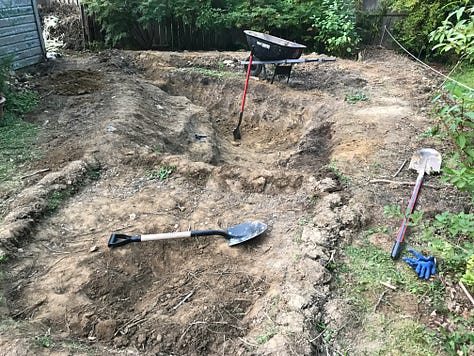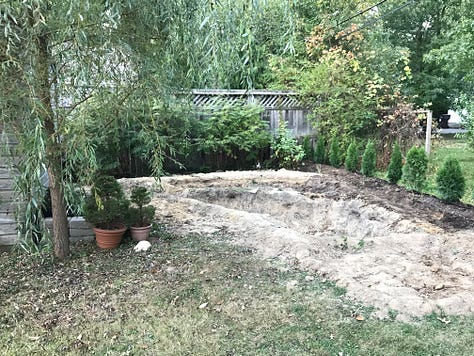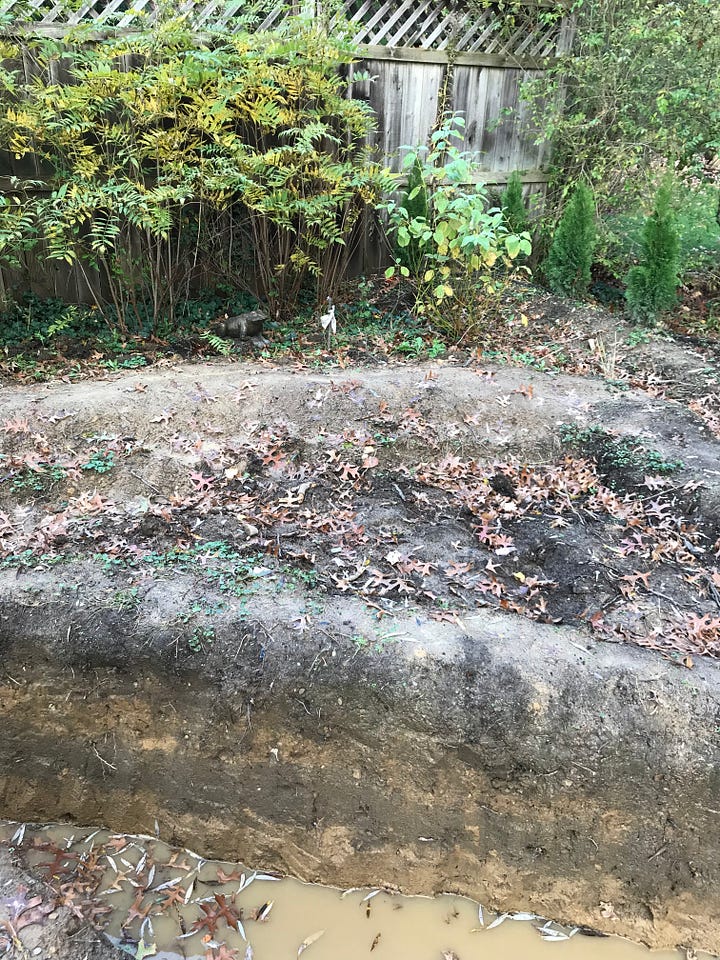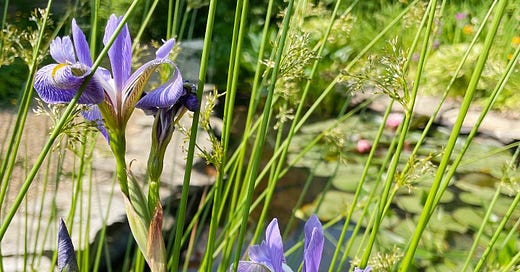Welcome to the origin story of our garden pond and the two bogs that frame it. It is located at the back of our property in the lowest elevation. This means that it looks more natural than it would if I had placed it up the hill near the house. I will show you how we built this garden area, some of my favorite plants that grow here, and give you plenty of tips and inspiration for your own water garden!
Why a water garden?
Water-loving plants are some of the most interesting plants that you can grow. I am fascinated by the way that water plants grow in different depths of water, just as terrestrial plants grow in different depths of soil. We will talk more about how to design a pond around your plants in a minute. First, here are a couple of books I have used extensively and would recommend for helping you to build a water garden:
The Practical Rock & Water Garden by Peter Robinson
The Water Gardener by Anthony Archer-Wills
Planning a pond
As I mentioned above, we planned to site our pond on the lowest spot on our property. It just so happened that we had a cozy corner behind our old shed that seemed to always have puddles after a rain. It was quite soggy, even more so than the Long Border area. You can just see the puddles below:

Another important part of planning is to create the list of plants that you hope to grow. This tip came from my gardening friend, Joel Voltz, and was very helpful as our space was relatively limited and I wanted to use it in the most effective way. I soon realized that my list of bog plants was quite a bit longer than my list of pond plants, so I decided to plan for two bogs.
For true pond plants, I did wish to include a couple of marginal plants which like to grow in just a few inches of water on a shelf at the edge of a pond. These edges also make for safer use when a pond is being built in a area with children, as these shelves can be used to keep a young child from sliding into a pond.
For the deeper parts, I wanted to grow hardy waterlilies. These plants would require at least a depth of 2 feet.
Digging a pond & two bogs
Because my main motivation for building a water garden was to grow Candelabra Primroses, I knew that I would need to plan to have a couple of bog areas around the pond. These would provide cover at the edges for amphibians, and wonderful places to grow a wide range of bog-loving plants. Here are a few photos of our excavations in 2017:





Keep reading with a 7-day free trial
Subscribe to Julie Witmer Gardens Newsletter to keep reading this post and get 7 days of free access to the full post archives.





